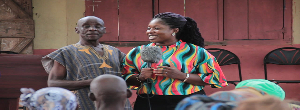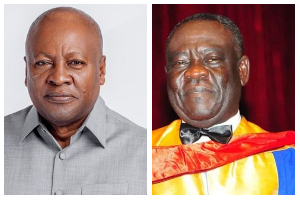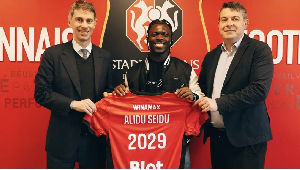Preliminary insights from a project led by Dr. Ivy Kesewaa Nkrumah points to the possibility that..."
The Jacobs Foundation, based in Zurich, Switzerland, is renowned for its dedication to improving educational practices globally. For the period of 2022-2025, the foundation is supporting Dr. Ivy Kesewaa Nkrumah, a senior lecturer at the University of Cape Coast, in conducting research aimed at promoting effective language of education policies that support inclusive teaching and learning in lower primary schools in Ghana.
Currently, the government of Ghana mandates that teachers instruct young learners in Class 1, 2, and 3 using the local languages spoken in their respective communities.
This policy, designed to enhance early childhood education by promoting better comprehension and learning outcomes, has sparked a series of debates among educators, parents, policymakers, and other stakeholders.
While many recognize the potential benefits of teaching children in a language they are familiar with, opinions on the policy's effectiveness and its implementation have been divided. Some argue that it fosters a stronger connection to the curriculum and improves cognitive development, as children can learn more effectively in their native tongues.
However, others raise concerns about its long-term impact, particularly in a globalized world where proficiency in English is often seen as essential for academic and professional success.
In the midst of these discussions, a new and increasingly important issue has emerged. The growing shift towards the use of local languages, especially in urban areas like Greater Accra, is starting to clash with the reality of linguistic diversity.
With many children in these regions becoming more fluent in languages like Twi rather than the traditional languages of their communities, such as Ga. Questions are being raised about the future of these indigenous languages and the potential challenges teachers may face in adhering to the policy.
This evolving linguistic landscape is introducing a layer of complexity to the implementation of the policy, with stakeholders now considering how to balance the promotion of local languages with the need to preserve and promote the diverse cultural heritage of Ghana’s many communities.
During a series of street interviews conducted across the Greater Accra region, many residents were asked about the local languages commonly spoken in their communities. The majority of respondents pointed to Asante Twi, a language originating from the Ashanti region, as becoming increasingly prevalent in Greater Accra.
This rise in the use of Twi seems to be gradually overshadowing Ga, the indigenous language of the region. In order to gain deeper insight into this shift, the research team engaged with a variety of stakeholders, including parents, community leaders, unit committee members, and traditional rulers.
Across these diverse groups, similar concerns were voiced. Many expressed that children in Greater Accra are becoming more fluent in Twi, often at the expense of the Ga language. A notable example of this trend was found in the Kojo Ashong community, where a community forum revealed that children are increasingly proficient in Twi, using it as their primary language of communication.
Meanwhile, the use of Ga among younger generations is steadily declining, leading to growing concerns about the preservation of the language and its cultural significance in the area. This shift represents a broader linguistic and cultural transformation in Greater Accra, with Twi gaining ground as the dominant language in many households and communities.
A follow-up visit to schools in the Greater Accra region revealed an interesting trend: even in areas where Ga is traditionally spoken, some schools have adopted English as the primary language of instruction. Despite this, when students come across challenging concepts, they often switch to Twi as a way of seeking clarification and ensuring a better understanding.
This shift in language is not only student-driven but is also supported by teachers, who frequently use Twi to explain difficult concepts that are hard to convey in English or when they sense that the children may struggle to grasp the material in English.
Additionally, during observations on school compounds, it was noted that children were predominantly speaking Twi to their peers rather than Ga, which might have been expected given the regional context. This suggests that Twi is becoming increasingly dominant in casual communication among students, highlighting the evolving linguistic dynamics in the area.
The research team is deeply intrigued by these findings and is posing several important questions to better understand the underlying causes. Why is Asante Twi becoming so prevalent in Greater Accra, while other local languages like Ga and even languages from other regions, such as Ewe, Dagbani, and Nzema, are not seeing the same rise in usage?
Is this shift a result of the influx of people from various regions into Accra, Ghana’s major city, where migrants from all corners of the country converge? Could the growing dominance of Twi in Greater Accra be linked to the fact that more Twi speakers have migrated to the region, making it the dominant language of communication?
Or, is it that Twi is simply easier to learn for the younger generation compared to other local languages, making it more accessible and practical for everyday use?
From March 2025 onwards, the research team will continue to explore language use in communities and schools to gain a deeper understanding of these dynamics. Their focus will be on how the evolving linguistic landscape is affecting the educational experience of young learners.
They aim to examine how the public’s concerns regarding the shift in language use can be addressed, and they will work to gather a range of opinions from various stakeholders, including parents, teachers, and community leaders, on the best practices for incorporating local languages into education.
The research will also seek to identify potential solutions to preserve indigenous languages while ensuring that students remain equipped with the linguistic skills necessary to navigate both their local communities and a globalized world.
Ultimately, the goal is to strike a balance between fostering cultural pride and identity through language, while also preparing students for future opportunities in an increasingly interconnected world.
Opinions of Tuesday, 4 February 2025
Columnist: Ivy Kesewaa Nkrumah















